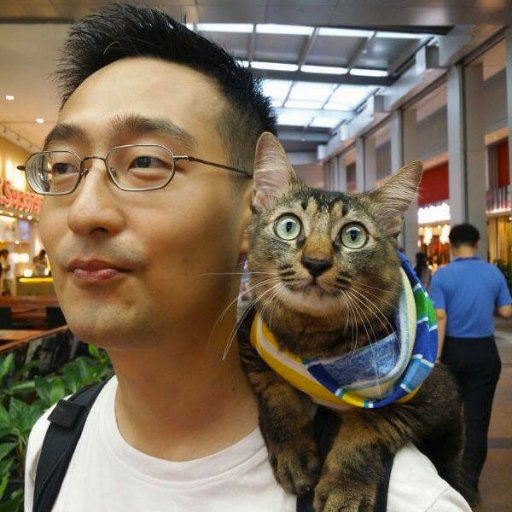
Jamie C. Weir
@Jamie_C_Weir
Followers
558
Following
992
Media
184
Statuses
532
British evolutionary biologist and entomologist. Lepidoptera | Phenology | Adaptive Colouration | Polymorphism | History of Science | Palaeontology
Edinburgh, Great Britain
Joined May 2019
After four years, some surprising findings, a pandemic, and taking care of over 20,000 noisy #caterpillars... 🐛🦋 I'm very pleased to have now submitted the final version of my PhD thesis at @SBSatEd. On #moths, #phenology, food chains, #climate change, and more 👇
1
4
39
In my **new paper**, out now in Folia Primatologica, I shed light on the nocturnal feeding habits of the Southern Lesser Bushbaby (Galago moholi), documenting observations made during fieldwork in S. Africa. https://t.co/aP03T62Lwe ...Scroll for more #bushbaby pics 👀👇 🧵 1/8
1
1
0
Talk about an in-flight meal. For the first time, researchers have captured rats hunting bats by grabbing them from the sky. Learn more: https://t.co/UnliS1ZEsn
114
939
8K
In summer, when insects are most abundant, they are a dominant part of the #diet of G. moholi. Understanding the kinds of insects eaten by bushbabies is key for their #conservation, and for unpicking their functional role in tropical/sub-tropical forest food-webs. 🧵 8/8
0
0
0
Sound may act as an important proxy for prey size in nocturnal feeding behaviour. Bushbaby vocalisations are usually confined to social contexts, but I also made novel observations of vocalisations associated with solo foraging 🗣️👇 🧵 7/8
1
0
0
Manipulative experiments using Male Driver Ants 🐜 - a popular prey item - suggested that while visual movement was a key driver of prey-finding behaviour in G. moholi, sound made prey items particularly attractive and increased the incidence of targeting for feeding. 🧵 6/8
1
0
0
Prior evidence is mixed, w/ some reports emphasising a primary role for Lepidoptera in the diet, others suggesting Coleoptera and Orthoptera are most important (e.g. 👇). I observed G. moholi easily catch moths mid-flight, including strong fliers such as hawk-moths. 🧵 5/8
1
0
0
Observing predation of different prey items, I found: • Moths were always consumed • Insects with distasteful or noxious secretions (Shield Bugs) were avoided • Beetles were examined before consumption, w/ only some eaten --> clear, species-level prey choice 🐒🐞🦋 🧵 4/8
1
0
0
While recording moths at a UV light trap in S. Africa during Oct/Nov 2024, I was able to closely observe the Southern Lesser Bushbaby (G. moholi) foraging and predating insects drawn to the light. This fieldwork was generously supported by @SBSatEd Davis Expedition Fund. 🧵 3/8
1
0
0
Much remains unknown about our #primate relatives. E.g./ #Insects are key in the diet of many #nocturnal species, but we still have little idea of: • which taxa are eaten, and why • indiv./pop./seasonal variation in preferences • #sensory stimuli used to find them 🧵 2/8
1
0
0
In my **new paper**, out now in Folia Primatologica, I shed light on the nocturnal feeding habits of the Southern Lesser Bushbaby (Galago moholi), documenting observations made during fieldwork in S. Africa. https://t.co/aP03T62Lwe ...Scroll for more #bushbaby pics 👀👇 🧵 1/8
1
1
0
These were the dinosaurs that faced the asteroid. Some of the last survivors. They lived in New Mexico, 66 million years ago. Among them was Alamosaurus, the size of a jetplane. We unveiled them, and their true age, today in a new paper in @ScienceMagazine!
6
107
660
You can read more about my work in @ConversationUK: https://t.co/TeiIVVUJpJ Or, have a look at our recent perspective piece in @GlobalChangeBio: https://t.co/z93poXaA46 2/2 🧵
onlinelibrary.wiley.com
Climate change can shift the seasonal timing of many species, and potentially disrupt feeding interactions between species that were formally synchronized in time. We identify a variety of mechanis...
0
0
0
Hot on the heels of receiving the @LinneanSociety's Marsden Medal, very pleased to announce that my PhD thesis also came in as runner up for the @RoyEntSoc's Alfred Russel Wallace Award! 🌿🐛 Thanks to @EastbioDTP, @SBSatEd, and my supervisor Ally Phillimore! 1/2 👇
1
2
2
You can find many of the key ideas discussed in my recent @GlobalChangeBio paper: 'Buffering and phenological mismatch: a change of perspective' https://t.co/z93poXa2ey
0
1
2
It was a real delight to go down to Burlington House the other week, to tour the @LinneanSociety collections and receive this year's John C. Marsden medal, for the best biology PhD thesis in the UK. It was, and remains, a tremendous honour. Interested in my thesis? 👇
2
1
4
NEW: Researchers from @CamZoology @USDA_NIFA have found that bee-friendly flowers growing on disused urban land can accumulate toxins from contaminated soils. This gets passed on to bees as they forage, damaging their health. 🐝 But it can be managed – find out more:
4
19
45
It's an incredible honour to be awarded the John C. Marsden medal from the @LinneanSociety for my PhD research on phenology, moths... and some very hungry caterpillars 🌳🐛 You can find out more about my work by clicking below and following the link 👇
Congrats @Jamie_C_Weir on winning @LinneanSociety John C. Marsden Medal for best doctoral thesis in biology, 'Buffering and trophic mismatch in spring-feeding forest caterpillars’ Just how resilient is wildlife to a warming climate? ➡️ https://t.co/8bOXkvRtYB
2
0
4
Seems like ages since we worked on this! Big congratulations to @SarahHLuke, @UKLadybirds, @Prof_CThomas, @luketilley, Simon Ward, and @allanwatt who were all key in pulling the paper together! 🦋🐞 @InsectDiversity @RoyEntSoc 2/2 🧵
0
0
0
Excited to report that our collaborative paper laying out the key priorities for entomological research is now among the 10 most-cited publications in #RESInsectConsDiv for 2023. #TopCitedArticle Do have a read 👇 (and keep citing 😉) https://t.co/bSkljw9WTR 1/2 🧵
resjournals.onlinelibrary.wiley.com
We present a set of grand challenges for entomology in the 21st Century, identified by members of the UK's Royal Entomological Society (RES), using a participatory prioritisation approach. The 61...
1
0
0







